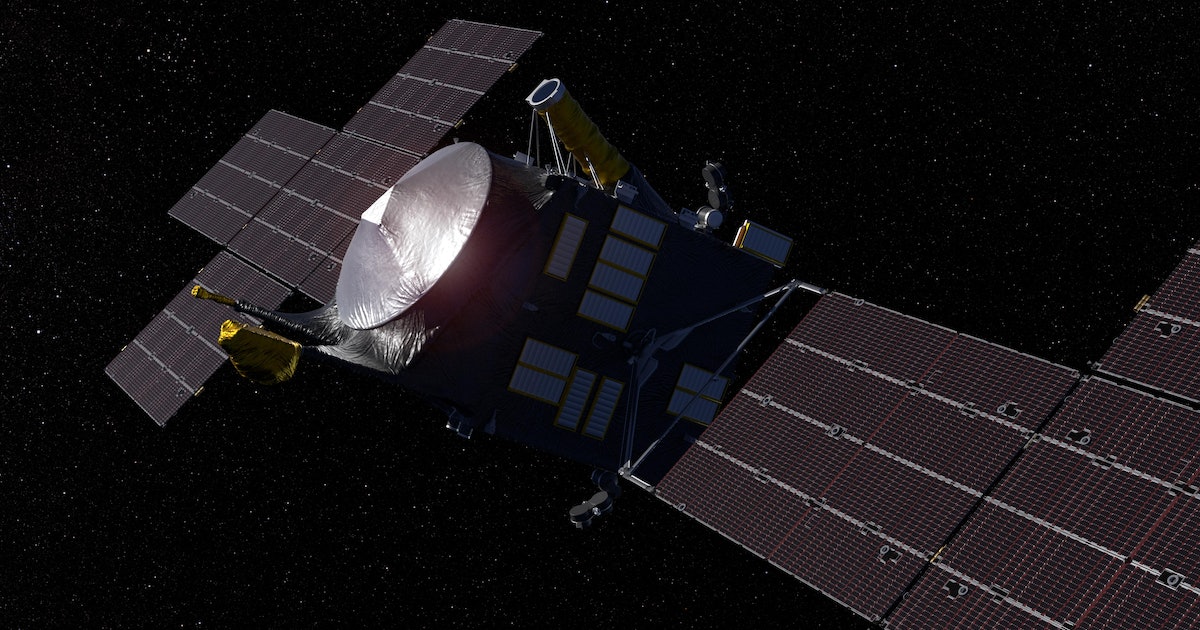
NASA’s mission to the heart of a dead protoplanet is back on
NASA’s mission to the still, metal heart of a proto-planet isn’t dead after all.
The agency announced on October 28 that after months of scrutiny, an independent review board has decided it’s possible to move forward with the Psyche mission — humanity’s first venture to a metallic asteroid, 16 Psyche.
What’s New – The Psyche mission is now on track to launch in October 2023, which means it could reach its namesake destination in August 2029 after a gravity-assist swing past Mars in 2026. In the meantime, the mission team is testing the spacecraft’s flight software, something that became a sticking point back in June when NASA realized that Psyche stood no chance of being ready in time for its original mid-October 2022 launch date.
That’s when NASA commissioned an independent review board to “study factors of workforce environment, culture, communication, schedule, and both technical and programmatic risks” on the Psyche mission. In other words, the board would decide whether to cancel the mission or move ahead and, if so, how. After several months in limbo, Psyche has a new lease on life and a new deadline for its software checkouts and other launch preparations.
Why It Matters – When certain very pragmatic Earthlings look at the iron-rich bulk of asteroid 16 Psyche, they mostly see dollar signs. The asteroid is basically a lumpy, cratered ball of nickel and iron about the size of the whole state of Massachusetts, and if orbital mining ever takes off, 16 Psyche is going to be worth major money. But its real value is impossible to quantify because it’s an astronomically rare look at the metallic cores around which planets, like our own, once formed.
Astronomers, like Psyche mission principal investigator Lindy Elkins-Tanton, are fairly sure that Psyche is the core of a protoplanet, a mass of rock and metal that started to coalesce into a planet but never quite accumulated enough mass to finish the job. Psyche’s core would have been hot, molten metal then, but it’s long since cooled. Over time, collisions with other chunks of space rock seem to have eroded away the outer layers of rock, leaving the failed planet’s metal core exposed to space.
It’s a rare chance to study a planetesimal core directly, and it could teach us more about the anatomy of the still-churning heart of our own rocky world.
What’s Next – The review board is still putting the finishing touches on its final report, which will probably reveal more details about what caused the mission’s major delays and how those problems are being solved.
Meanwhile, the fate of another asteroid mission is still up in the air. The Janus mission, which will send a pair of suitcase-sized spacecraft to study two different binary asteroid systems (picture something like Didymos and Dimorphos), was originally supposed to hitch a ride on the same Falcon 9 rocket that would have launched Psyche in October 2022. It’s not clear at the moment whether Janus will hold out for Psyche’s new October 2023 launch date or find another ride to space. According to a press release, “NASA continues to assess options.”
NASA’s mission to the still, metal heart of a proto-planet isn’t dead after all. The agency announced on October 28 that after months of scrutiny, an independent review board has decided it’s possible to move forward with the Psyche mission — humanity’s first venture to a metallic asteroid, 16 Psyche. What’s New – The Psyche…
NASA’s mission to the still, metal heart of a proto-planet isn’t dead after all. The agency announced on October 28 that after months of scrutiny, an independent review board has decided it’s possible to move forward with the Psyche mission — humanity’s first venture to a metallic asteroid, 16 Psyche. What’s New – The Psyche…